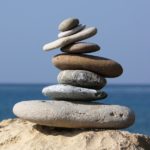How dull the world would be without flowers! Their beautiful colors add spark to our gardens, and tables, but the real magical beauty lies within. The anatomy of a flower and the role of the pollinator intricately weave and work together to create fruits and seeds. A fascinating story about angiosperm magic is about to unfold!
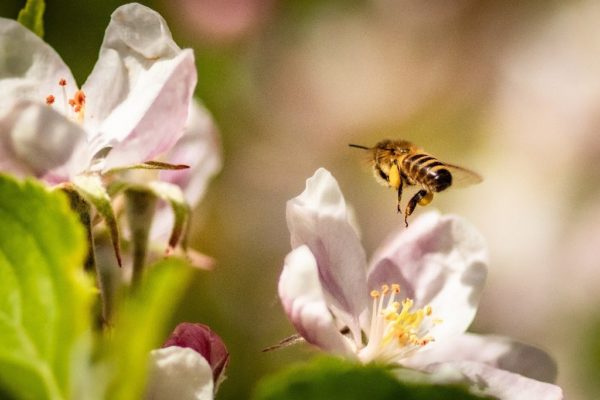
Quick Note
To understand how a blossom can become a piece of fruit, we need to be familiar with the anatomy of a flower. To do this, we will look at the flower’s non-reproductive and reproductive segments separately. During this unit of study, all learners should practice the art of scientific observation. A magnifying glass helps! Observe the flowers in your yard, at a grocery store, or nursery after each section. All flowers are different (as you will see) and with some species, it will be easier to point out anatomical features than others.
NOTE: Older students might have no problem digesting all the information at one time, but younger botanists will do best with the material broken into smaller classes. There is no reason why preschool and kindergarten students should be left out. Utilize some of the information, but I suggest doing more of a field study of looking at and examining flowers while pointing out petals, stems and the amount of information that is age appropriate.
Let’s get started!
Gymnosperms and Angiosperms
If you have already completed the gymnosperm unit you know that gymnosperms means ‘uncovered seeds‘. We learned that conifer seeds grow outside the pinecone. Angiosperms on the other hand, are plants that produce ‘contained’ seeds. Angio means container, and sperm means seed. Apples have contained seeds, and so do acorns, peas, rice, wheat, lilies, peppers, just to name a few. All seeds fall into one of these two categories: gymnosperms or angiosperms.
- The Fascinating World of Gymnosperms for Kids is not a prerequisite, but the information, along with our section on angiosperms will offer a solid foundation in beginning Botany.
- Also check out: Taking the Confusion out of Identifying Conifers for Kids
Free Lab Sheets
Topic labs and worksheets help reinforce information. In this study set you will have access to:
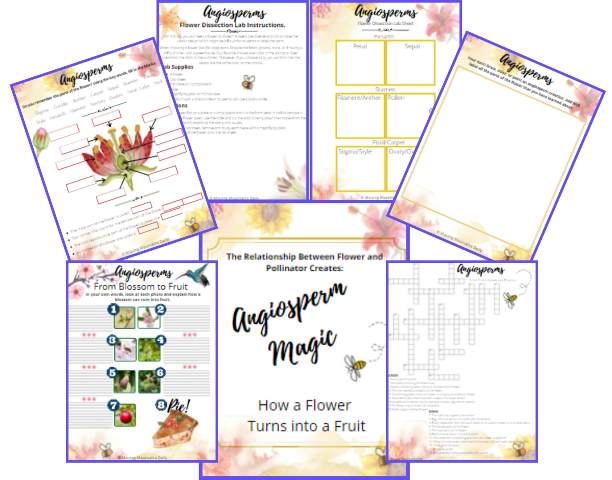
- Flower dissection Lab: Directions and lab sheet.
- Flower anatomy worksheet.
- “From Blossom to Fruit” Worksheet
- A space to create and label your own angiosperm.
- Criss-Cross puzzle quiz for all the vocabulary listed at the bottom of this post.
- Answers to the anatomy worksheet and puzzle.
The Anatomy of a Flower
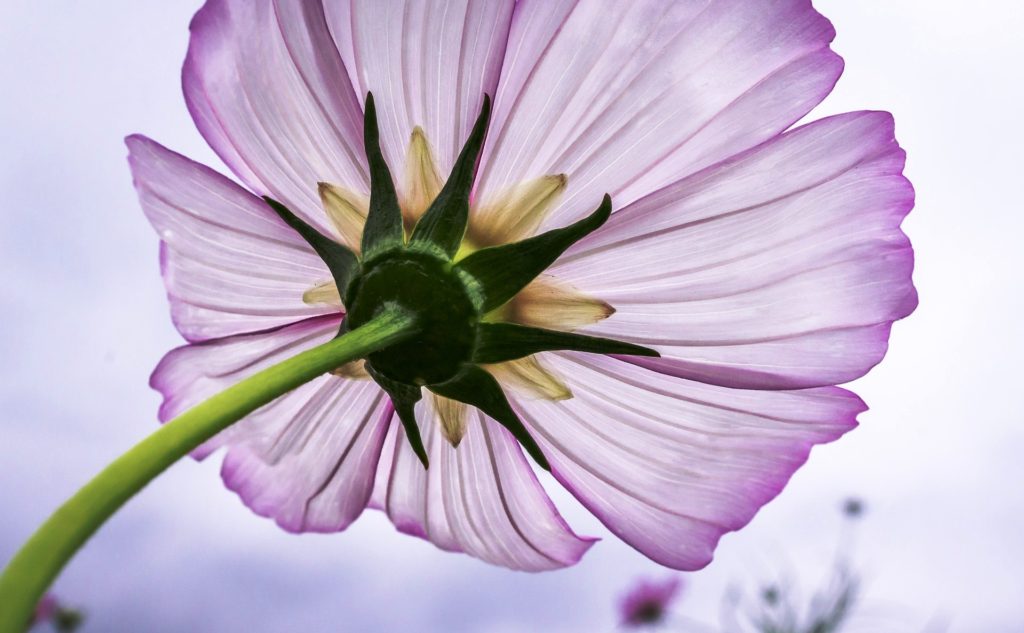
You can see the green sepals that once protected the bud.
The Perianth
The ‘perianth‘ protects the non-reproductive anatomy of the flower. Before blooming occurs, a set of hardy leaves, called the ‘calyx’ protect the little bud. When the flower blooms, the calyx opens and separates allowing the flower to emerge. The individual sections of the calyx are called ‘sepals’. Turn a flower upside down and you will see the separated sepals. If the flower you observe doesn’t have sepals underneath it is because they did their job and fell off. However for some species the sepals offer support to the ‘corolla‘, or the full fan of petals.
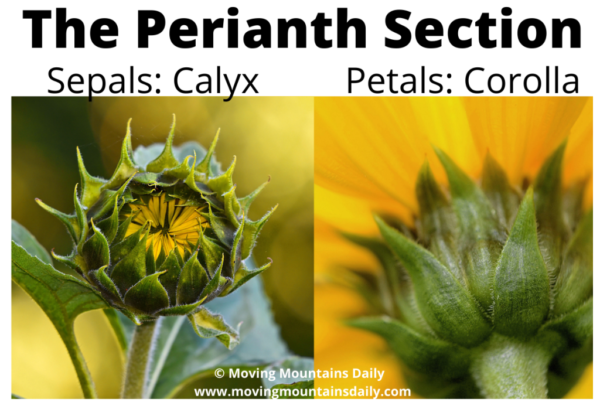
The sepals, on the right, support the sunflower.
Do you know the difference between a blossom and a petal? Click here to find out more!
The Male Anatomy of a Flower
Take away the perianth sections and only the male and female reproductive organs remain. The male organ, or the stamen, consists of a filament and an anther. (Notice the word ‘men‘ in stamen.) The filament juts out from the center of the flower and at the very tip, the anther produces pollen in a small sac. The stamen’s job is to make pollen. Touch the tip of the anther and fine grains of pollen dust will cover your finger. These tiny particles contain two little sperms – or seeds. Did you know that pollen is a seed? Most of us only know that pollen is what makes us sneeze and feel stuffy during certain seasons!

The Female Anatomy of the Flower
The pistil or the carpel, normally located in the flower center, contains the female parts called the stigma, the style, the ovary and the ovules cells. The style is the long tube that extends from the ovary. The ovary contains tiny egg shape cells, called ovules, which might become seeds – but only if they are pollinated. The stigma, found at the top of the style, is sticky so that pollen grains will stick and ensure pollination.
- The words pistil and carpel are two words that label the flower’s female parts. You will find that many times they are used interchangeably. For practical purposes and for this age group, it is not necessary to go into the different styles of carpel.
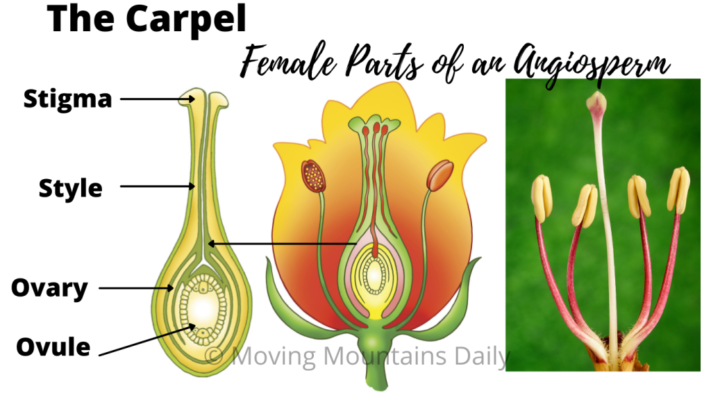
As you can see from the photo below the stigma comes in all shapes, sizes and colors. The bright colors attract pollinators.
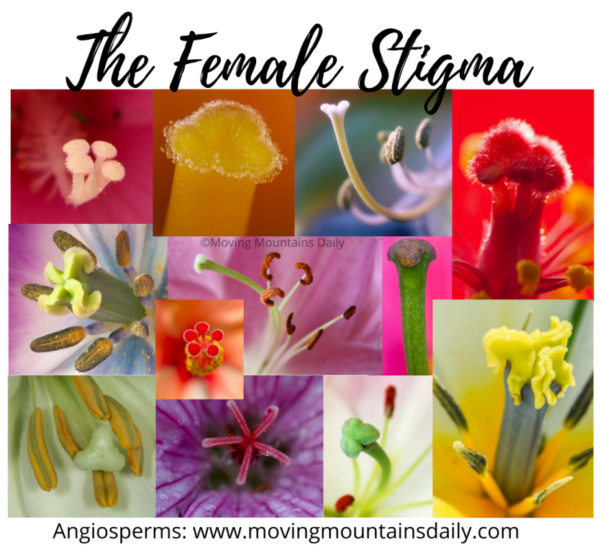
The Nectary and Pollination
The movement of pollen grains from one flower to another is key to fruit (and seeds) production! Wind pollination is possible, but the method is rather unreliable because the wind blows pollen in all directions. Bees, insects, birds, butterflies, and bats (to name a few), are more dependable than the wind, because they move pollen from one plant to another with precision. The bright colors of angiosperms attract pollinators, but what they really want is the sweet nectar!

Nectar is the sustenance for many types of insects, birds and mammals. The sugary substance attracts pollinators who gains energy from the sugar, and thus fly happily from flower to flower. Angiosperms have small structures called nectaries.
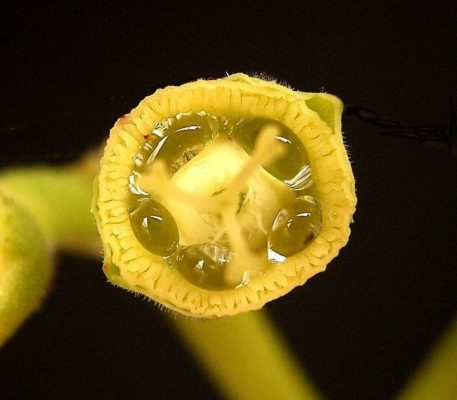
The glands containing nectar, can be located on any part of the plant, but most are located at the base of the stigma. There is a good reason for this. As bees, hummingbirds, and other nectar-loving critters search for nectaries, they will brush up against the pollen-laden anthers and transfer the pollen to the sticky stigma in the next flower. Getting nectar is a small reward for pollinating. Just think of getting paid with candy for a job well done! (I will work for chocolate any day!)
See the pollen-laden anther sitting on top of the hummingbird’s head in the photo? When the bird moves from flower to flower, it is spreading pollen. Such important work for a drink of sugary syrup!
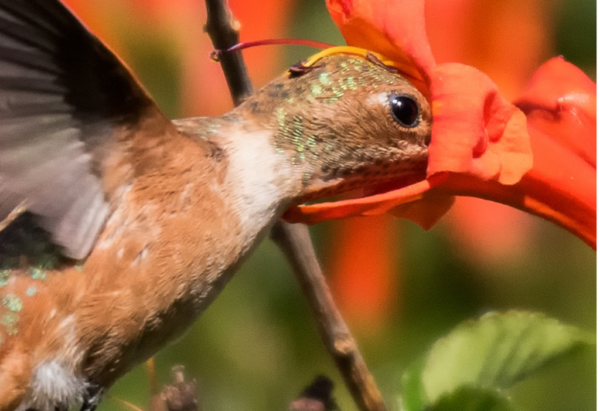
Cross Pollination
My neighbor has two apple trees in his back yard. Pollen from the opposite tree, or a different tree, must be transferred in order for his trees to produce fruit, which by the way, puts applesauce, pies and other apple goodies on my table! This term is called ‘cross pollination‘. To remember this, I tell my students to think of pollinators flying a’cross‘ the field to ‘pollinate‘ a neighboring fruit tree. Even in the botany world, it is very neighborly to share! In a couple instances, though, this is not the case. One example, is the Braeburn apple comes from a ‘self fruitful‘ tree – or one that can self-pollinate from its own flowers. However, cross-pollination is still best and a higher yield of apples will occur by owning two apple trees.

From Flower to Fruit
All Angiosperms make flowers before they make seeds. Have you ever wondered just how an apple starts to grow?
When pollen dust settles on the stigma, it grows a pollen tube that will journey down the style in search of an egg (ovule) in the ovary. When the pollen seed meets the egg in the ovary, they join. At this point, the blossom has everything needed to make fruit.
Sadly, the onset of fertilization means the death of the beautiful blossom. But that is just the beginning of our story! True, the blossom will wither and fall off but the ovary remains. As the eggs grows, the ovary enlarges and overtime slowly ripens into a fruit. It might even end up on our table!
Look closely at the following pictures of a developing apple and a strawberry. Can you tell where the fruit begins to grow from the flower?
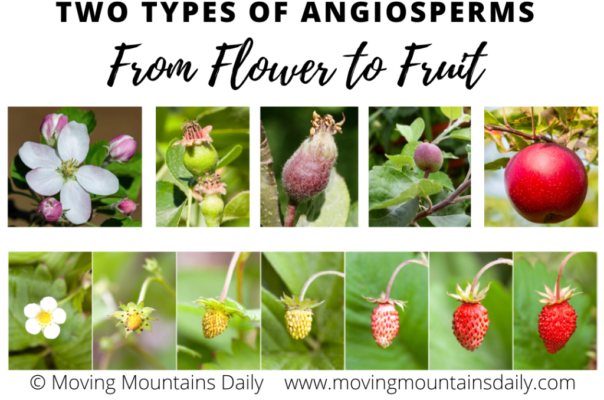
Here’s a closer look at the changes between flower and fruit.
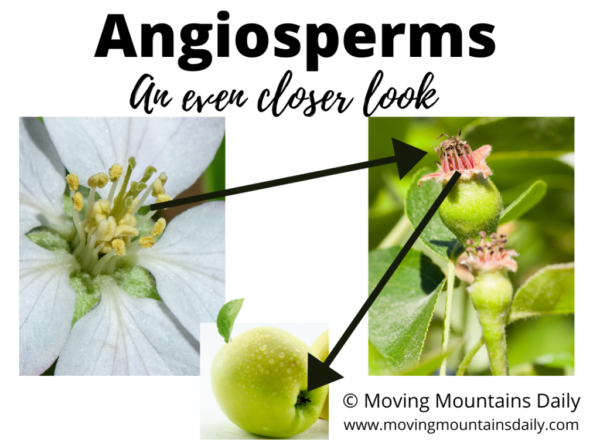
In the picture above, notice the remaining stamen once the flower petals fall off. Can see how the fruit develops directly underneath? Now, if you look at a mature apple – like one in your refrigerator – you will see remnants of the dried up reproductive segments. Now you know what that fuzzy piece is at the bottom of the apple!
Where would we be without pollinators?
Insects, especially bees, are SO important! Think twice before squishing one. Most of the time people kill either out of fear, or because of their lack of understanding. The insect plays an important role in the food chain and in the ecosystem. Without insect pollination, there would be no fruit. I can’t imagine the world without honey, sugar cane, watermelon, apples, grapes, and especially, CHOCOLATE!
90% of the world’s flowering plants require pollination. Pollination brings us so much more than just food. Most people only think of honey when they consider pollination, and never give thought to the fabrics that make our clothes. Flax and cotton plants would not produce without pollination! These are only a few examples, but the point is: the world could not survive without pollinators!
…..and Q Tips! What would we do without Q-tips?!?
…..and string! I can’t live without string! …. or cotton balls! You get the point.

Supporting The Pollinator
Think about the role of the pollinator. They are not only responsible for most of the food we eat, but they are the foundation of our natural ecosystems. Pollinators help plants produce seeds so more plants can grow. Plants clean the air, prevent soil erosion and feed wildlife. It is amazing how pollinators support life on earth.
But, pollinators are in trouble. Populations of pollinators are in decline due to loss of habitat and feeding grounds. Pollution, acid rain, chemicals added to our environment, disease (like the parasitic mite that are attacking bee colonies), are adding to the demise of pollinator populations.
What can we do to help?
- Home gardens attract pollinators. Plant flowers that are native to your specific area.
- Pollinators live in the city and they need flower patches there too!
- Create a community garden to share with others in your community.
- Support local farmers by purchasing locally grown honey.
- Spread the word about pollinators to others.
- Create a science fair board about pollinators and their importance.
- Don’t kill bees and other insects out of fear or just because they are insects.
- NEVER underestimate ‘kid-power’! You have what it takes to help others make changes!
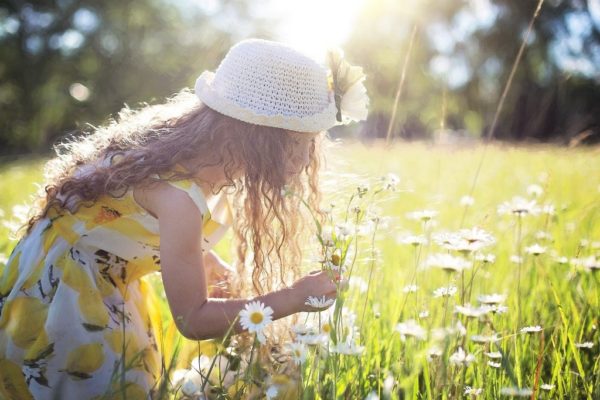
VOCABULARY
Angiosperm – Plants that produce ‘contained seeds’.
Perianth – The non-reproductive parts of the flower.
Calyx – The leaves enclosing the flower bud.
Sepals – Separated Calyx leaves that often support the flower bloom.
Corolla – the bloom that includes ‘all’ the petals.
Stamen – The male parts of the flower.
Filament – The stalk that supports the anther.
Anther – Produces pollen.
Pollen – Fine powdery seeds produced by the anther.
Pistil – The female parts of the flower.
Stigma – The head of the pistil.
Style – The stalk of the pistil.
Ovary – Located at the bottom of the style and contains egg cells or ovaries.
Ovules – Egg cells that will turn to seeds after fertilization.
Nectaries – Glands containing sweet nectar at the base of the flower.
Nectar – Sweet sugar made by flowers.
Pollination – The movement of pollen grains from one flower to another.
Cross Pollination – Transferring pollen from one flower to a stigma of a different flower.
Self-Fruitful – Pollen deposited on the stigma from the same flower or to another flower on the same plant.
Fertilization – When the male pollen seed reaches the ovary and joins with the female seed.
